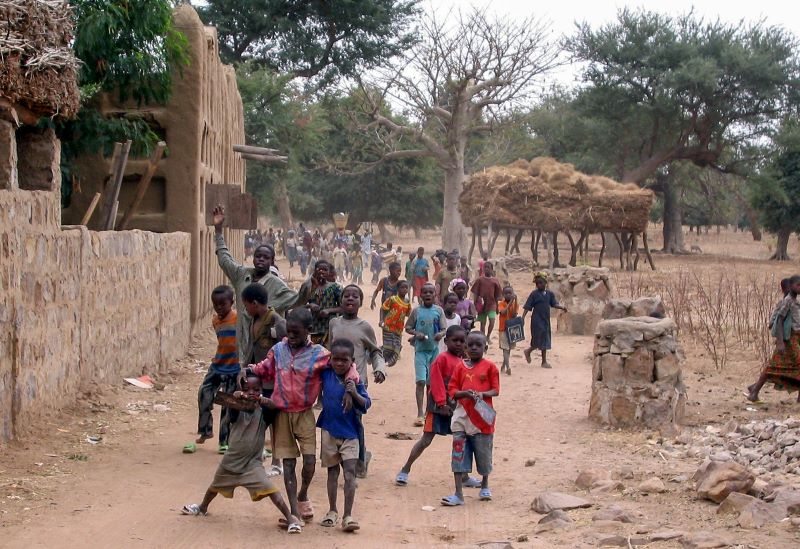Overview of Poverty in Mali
 Mali, a country of 22.9 million, faces some of the highest poverty rates in the world. The country’s extreme poverty rate, defined as making less than $2.15 per day, has only increased since COVID-19, hitting 19.1% in 2022. The most vulnerable populations have continued to lose purchasing power as prices climb higher and economic growth dwindles. Yet the economy itself has continued to grow, raising 3.5% in 2022. This article outlines quick facts about poverty in Mali.
Mali, a country of 22.9 million, faces some of the highest poverty rates in the world. The country’s extreme poverty rate, defined as making less than $2.15 per day, has only increased since COVID-19, hitting 19.1% in 2022. The most vulnerable populations have continued to lose purchasing power as prices climb higher and economic growth dwindles. Yet the economy itself has continued to grow, raising 3.5% in 2022. This article outlines quick facts about poverty in Mali.
Poverty in Mali: Political Context and Basic Needs
Mali has had five military coups since gaining its independence from France in 1960, the most recent being in 2021. The coup in 1991 was relatively successful, but the country has faced instability since the coup in 2012. There was another government breakdown in 2020 and a Head of State was named in 2021, but that was quickly overthrown by the original coup leaders. This has led to further government instability and a lack of access to public services, contributing to poverty in Mali.
In 2020, 2021, and 2022 only 45% of Malians had access to basic sanitation, 48% had access to electricity, and 40% had access to clean drinking water, respectively, according to the Bertelsmann Transformation Index (BTI). Access to these basic needs is unequal between regions, with access being the worst in the northern region and sparse rural areas.
Unemployment and Children’s Rights
Agriculture makes up 80% of Mali’s employment, yet 65% of the country’s land is a total desert or semi-desert area. This forces most agriculture to stay along the Niger River, making the sector much more vulnerable to natural disasters. The country also faces land degradation, a lack of fertilizer, and post-harvest losses from poor storage and processing capacity, according to the World Food Programme (WFP). All of this contributes to smallholder farmers having higher-than-average poverty rates.
“More than 2 million children between 5 and 17 do not go to school,” according to UNICEF, despite national efforts to improve education over the last decade. More than half of Mali’s young people are still not literate. Children in Mali often have to drop out of school to work, enter child marriages or because of school closures. Besides dropout rates, Malian schools also struggle to find enough qualified teachers and textbooks for students. Only 73.8% of girls and 85.5% of boys are enrolled in primary school and only 15% of girls and 21% of boys continue to secondary school, UNICEF reports.
Every year of education can increase an individual’s income by up to 10%. Education provides people with the skills and knowledge they need to secure employment and become financially independent. It is considered to be one of the most effective ways to combat poverty in Mali, yet so many Malians still cannot access it.
Conflict and Displacement
Many of the poorest in Mali struggle with internal displacement. At the end of 2023, internal displacement affected around 344,000 people in Mali due to conflict and violence or natural disasters such as flooding. Many people lose their income due to displacement, plunging them into poverty. Almost two-thirds of internally displaced households lacked a stable income source in 2023, compared to less than 20% of non-displaced households, according to the Internal Displacement Monitoring Center (IDMC).
A combination of the above issues, armed conflict and restricted humanitarian access are pushing nearly 1 million Malian children under 5 into acute malnutrition. Close to 5 million children are in urgent need of humanitarian assistance in Mali and at least 200,000 are at risk of dying of hunger if they do not receive aid. In Northern Mali, the Sahara desert is quickly expanding and encroaching on farmlands, directly leading to food shortages in the country.
Addressing Poverty in Mali
Many international organizations are working to address the complex web of issues contributing to poverty in Mali. UNICEF, for example, has programs aiming to strengthen and spread access to education in Mali. UNICEF supports Mali’s Ministry of National Education, the Ministry of Vocational Training and the Ministry of Higher Learning and Scientific Research to support education at all levels, according to its website. It also works with in-country partners to offer education opportunities to out-of-school children. The organization works to build up the capacity of school management committees, train more teachers and increase access to school materials for teachers and students.
USAID currently has eight active programs in Mali fighting to eradicate malnutrition. Mali is one of USAID’s 12 “Feed the Future” target countries for focused investment under the U.S. Government’s Global Food Security Strategy. The U.S. has made strategic investments in 113 communities addressing malnutrition, low dietary diversity, improving agricultural trade and investment, and bullying capacity among farmers, the private sector, civil society and public institutions. These programs are a part of the five-year USAID/Mali Health Strategy, which “seeks to achieve sustained improvements in health and facilitate Mali’s journey toward self-reliance.”
– Anna Thibodeau
Anna is based in Omaha, NE, USA and focuses on Good News for The Borgen Project.
Photo: Unsplash
